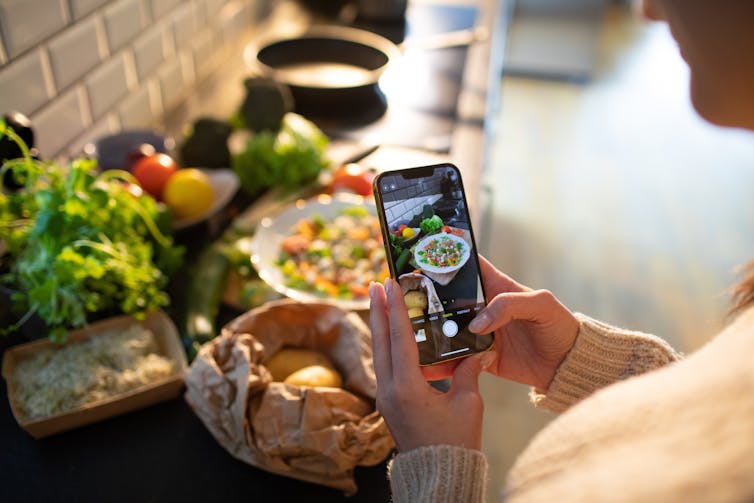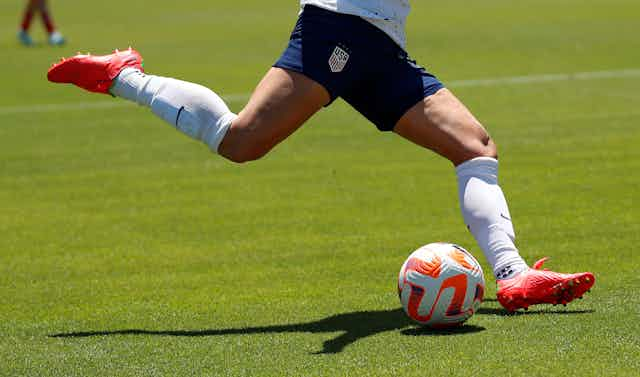The 2023 Women’s World Cup is projected to be the most-watched in tournament history and has seen a massive surge in sponsor interest.
The growth in commercial investment of women’s soccer is deserved and overdue. Yet, sponsorship and marketing deals with many women athletes are performative at best as women’s national soccer teams continue to fight for equitable investment from their federations.
Sponsorship is a mutually beneficial exchange of value between multiple parties involving commercial potential. Because many professional women athletes already work multiple jobs to earn a living wage, some are forced to accept unfair deals.
In addition, many corporations are able to cultivate a positive public image while exploiting women’s labour.
Losing sponsorship and labour exploitation
As part of our recent sport management research into this issue, we worked with current professional women soccer players from the United Kingdom (Women’s Championship and Women’s Super League) and the United States (National Women’s Soccer League) who had a sponsorship deal at one time in their careers.
Because our study was centred on storytelling as a form of research, we will share some excerpts from the soccer players we spoke to that highlight the inequities women continue to face in sport.
We also worked with average professional athletes, rather than the upmost elite who have multiple lucrative partnership deals. These average athletes still played in the world’s top leagues, but were not as widely recognized as the top players of their sports.
Olivia’s story of losing sponsorship

Olivia is a professional footballer in her mid-twenties who competes in England’s tier one Women’s Super League. While she does not currently have a personal sponsor, she formerly had a partnership with a large shoe and athletic apparel brand that ended abruptly after she changed teams.
Right now, I currently don’t have a sponsor. In men’s soccer, players in the top three leagues will have [brand deals] whereas in women’s soccer it might only be the top players.
I’ve been fortunate because when I signed my first professional contract, I did gain a two-year deal with [a brand]. That being said, I remember trying to get shin pads for the season, and it took about three months just to get a pair.
On Instagram they were like “Olivia this, Olivia that,” but I’d wait a long time for the essentials. The next season I moved teams, and they pulled the sponsorship.
They said the team I was playing for wasn’t what they would class as “tier one” football, even though it was. They were a second-tier club in the men’s game, but the top in the women’s league. I wasn’t expecting it to end and it was brutal.
Olivia’s story reveals how the majority of professional women’s soccer players rarely receive sponsorship deals. Despite moving to a higher ranked women’s club, Olivia’s sponsorship criteria was based on the equivalent men’s team, which was a tier lower.
Sponsors continue to gain positive brand recognition from fans looking to support corporations that endorse women’s sport. Yet, despite this public persona, corporations do not always meaningfully invest in women athletes.
While the significant lack of media coverage afforded to women’s sports may not allow a breadth of professional athletes to be widely known, the women we interviewed believed men players at all levels received unquestioned sponsorship while they had to fight to be seen as valuable despite the surging profitability of women’s sports.
Morgan’s story of labour exploitation

Morgan is a professional footballer in her early twenties who competes in England’s tier one Women’s Super League alongside her country’s national team. While she does not currently have a sponsor, she recently completed her first career sponsorship with a meal prep company.
Recently, I did have a food sponsorship deal, that meal prep stuff. It isn’t paid, but I just need to post twice a month when I receive the food and I get to keep all of my meals for free. I actually thought they would make me still pay, but instead they gave me a discount code to give out to other people.
Before I had a sponsorship deal, I thought you had to have a certain look. Like the perfect body. But that’s changed; it’s more how good you are at your actual sport and how active you are on social media.
So far, they’ve been happy with what I’m doing and repost what I do since it’s easier for them to not have to make their own content. At the moment, we have to really prove ourselves to get recognized. So, when we do get media opportunities, it’s something everyone jumps at, even if it’s a two-hour drive away.
Morgan’s story reflects a positive shift away from the over-sexualization of women athletes. Rather than being primarily valued for her physical appearance, Morgan’s athletic ability was recognized as being valuable on its own.
But it also reveals that women athletes are expected to perform the unpaid labour of creating digital partnership content.
Corporate sponsors of women’s sports experience an increase in consumer intent to purchase their products or services around their supposedly equitable brands. But these sponsorship deals are not as equitable as they seem because the women athletes receive little to no financial compensation for their work.
Current state of women’s sports marketing
Despite women’s sport traditionally receiving only one to two per cent of global sport sponsorship dollars, investment is exponentially increasing as media coverage begins to meet consumer demand.
However, while previous sport sponsorship literature has focused on men athletes and mutually beneficial partnerships, it is clear that the power imbalances in women’s sport sponsorship reflect a different exploitative reality.
The state of marketing and sponsorship in women’s sport is far from equitable — even though it may be portrayed as otherwise in media coverage. The women in our study discussed how male athletes receive substantial financial and brand-specific compensation for their sponsorship deals. In contrast, the women felt like they just had to be grateful for whatever they had been given.
While positive change has been seen, especially surrounding this year’s Women’s World Cup, there is still much work to be done by women’s soccer organizations and corporate sponsors to create a more equitable sporting future.

